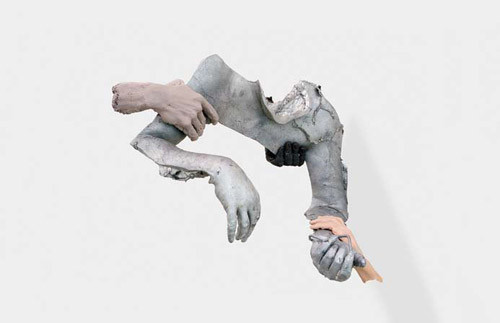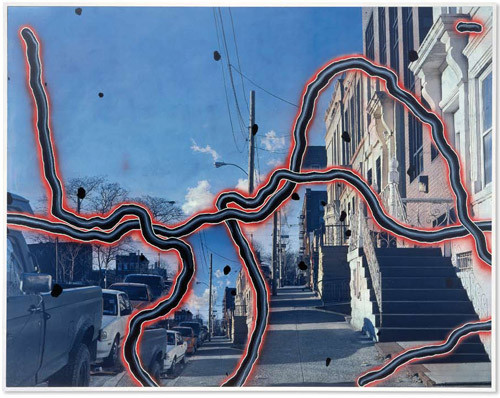Urs Fischer
Published: May, 2011, ZOO MAGAZINE #30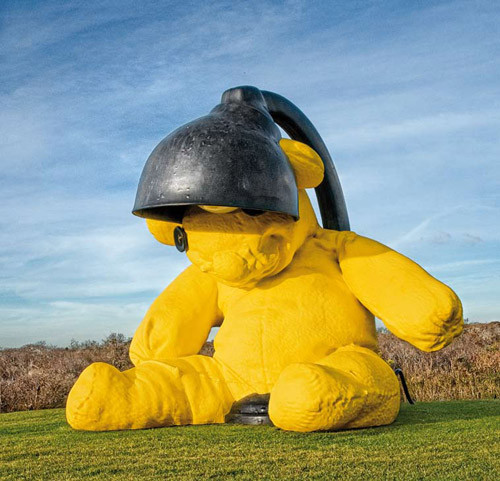
The giant yellow teddy bear finished by Urs Fischer in 2006, in a limited edition of three, fetched 6.8 million dollars at a Christie’s auction last May. The sweet, archetypal toy bear leaning against a black lamp is a good example of the kind of art that Swiss-born, New York-based artist Urs Fischer makes. They represent a surprising combination of objects that everyone knows and recognizes, objects that form part of the multicultural reservoir of everyday life.
But Fischer’s art is in the way he combines these objects: in the aforementioned artwork, the lamp shamelessly and inexplicably pierces the head and body of the bear, making their relationship at closer glance awkward and absurd. Because of this simple yet effective intervention, Fischer can question the order of things in general. Full of childhood references and dreams, the huge bear is a big gesture and a joke at the same time: you want to touch it, you want to have it. And this kind of feeling is generated by most of Fischer’s art.
Marta Gnyp: As a very young artist, you were admitted to the prestigious postgraduation institution De Ateliers in Amsterdam. What happened during your time there? Why didn’t you complete your studies?
Urs Fischer: I had a great time there. I left because I wanted to go do something else. Art school didn’t capture enough of my interest.
MG: Is there an advantage to not having an artistic education?
UF: What makes you think I don’t have an artistic education?
MG: Your own early statements. I also read that you only recently started to learn about art. Do you mean learn about certain issues in the history of art and their relation to now?
UF: I meant getting a sense of what one actually does being an artist, learning what it means to be an artist. It becomes a complex thing the older you get: you become limited to yourself and these limitations are what afford you artistic growth. Artists take off like satellites on their own mission into outer space. Occasionally they send messages back.
MG: Do you see your place in the history of art? Does the history of art interest you at all?
UF: As its own discipline? As its own discipline, it’s something I have a hard time relating to.
MG: I read that you consider the ‘Geist’ as the source of your ideas: a combination of intellect, psyche, spirit, and thinking. Is there logic in your art?
UF: I don’t remember saying this. Geist is good though. Sure there’s logic. Otherwise nothing could get made.
MG: How do you make your decisions on formal and conceptual issues? You said that sometimes you don’t know how your decisions work. Is it a matter of intuition? What is intuition in your case?
UF: The same as with everyone else, I would think. Intuition is intuition, right? I like to work with intuition as much as I can.
MG: Your works are visually extremely powerful. You play with sizes, colors, relations between objects and space, with the materials. These are artistic techniques being used by other artists as well. How come your works are so different, energetic and overwhelming?
UF: Are they? That’s nice to hear!
MG: Do you like big gestures in art?
UF: Sure. And in life.
MG: Do you experience your art physically?
UF: No, but my assistants do!
MG: You once said you are a religious person. Is there anything religious about your work? Perhaps your art is a form of worship of consumerism? Is art a way to avert the fears of the modern life?
UF: Strange, I don’t remember saying this either. Everybody has his own type of spirituality; everyone tries to understand and make his place in the world. I do dislike organized religion. Consumerism? I don’t think my work has anything to say about it directly. Maybe it’s a silent worship I’m not conscious of (maybe like being an agnostic). I can’t imagine fears of modern life being any different than fears of 900 years ago: fear is going to be fear; it’s a basic human thing.
MG: Why do you never touch directly political issues?
UF: In my art? I think that most of art dealing with politics is either a deliberate propaganda or a case of an artist feeling unable to participate in politics and trying to make up for that. I don’t think propaganda is a forte of art-making anymore. Art is an after-reflection, not a frontier, otherwise Cubism would have begun in 1850 or earlier.
MG: Would you like to have permanent control over your works?
UF: No.
MG: Today there are too many artists, too many galleries, too many fairs. There is overproduction of good and bad art works. Where do we go from here?
UF: There is too much of everything. I think this is a matter of overpopulation in general. Drastic changes will happen at some point I’d guess.
MG: Is the art market the connection between art and the real world?
UF: Art, the art market, and the real world are all part of the real world. There’s always a desire for order, control, separation, an overview. But there’s not a whole lot one can do to control reality, or art for that matter. MG: Do you enjoy the prices fetched by your works? Has what you call angelic money changed your life? UF: There are two things: the prices of my works and the money I see in the end. Pricing is very much out of my control. The money I don’t mind at all. It makes my life more enjoyable in many ways.
MG: Is there still anything Swiss about you?
UF: Absolutely.
MG: Is food as much as an importance in your private life as in your art?
UF: More.
MG: Does the fact that you are living in the American environment and speak English liberate your thoughts?
UF: I really like speaking a language that so many people speak. More thoughts and ideas circulate when a language is as pervasive as English is right now. It’s great to be a participant and witness to that larger dialog.
MG: Do you like to be a celebrity? Do you cultivate the myth of the free spirit and the unpredictable artist yourself?
UF: I don’t think I do. I believe in hard work.
MG: Is art a fight against boredom or against the routine of life?
UF: Art is play.
MG: Are you one individual or are there many Urs Fischers?
UF: One for me, one for you.
MG: Why do you like tattoos?
UF: I can’t remember actually.
Urs Fischer is represented by Galerie Eva Presenhuber, Zurich, www.presenhuber.com Sadie Coles HQ, London www.sadiecoles.com; and Gavin Brown’s enterprise, New York, gavinbrown.biz
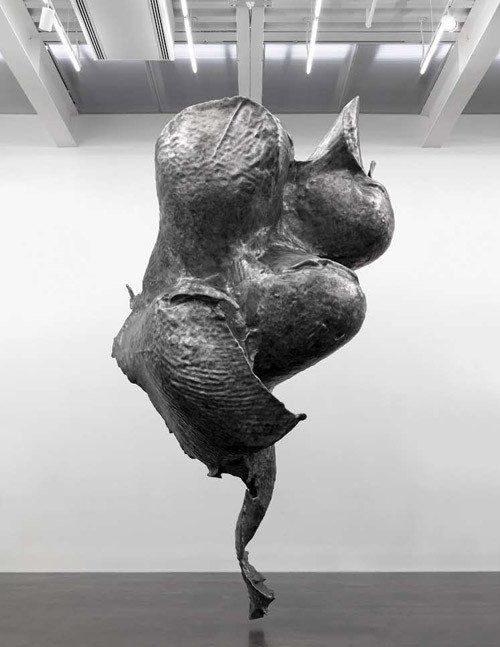
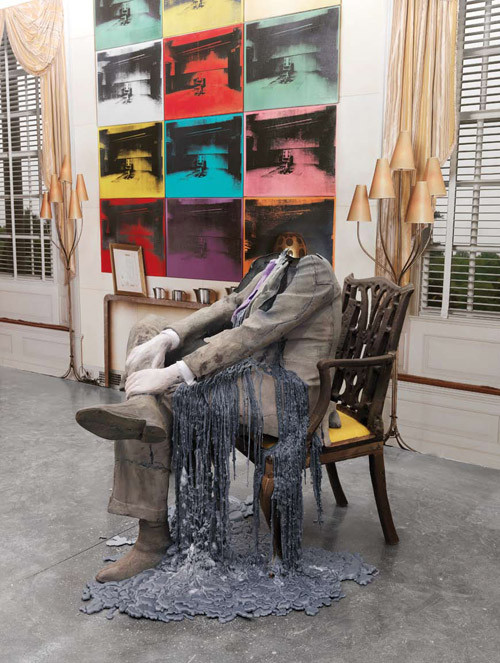
PHOTO: MATS NORDMAN
